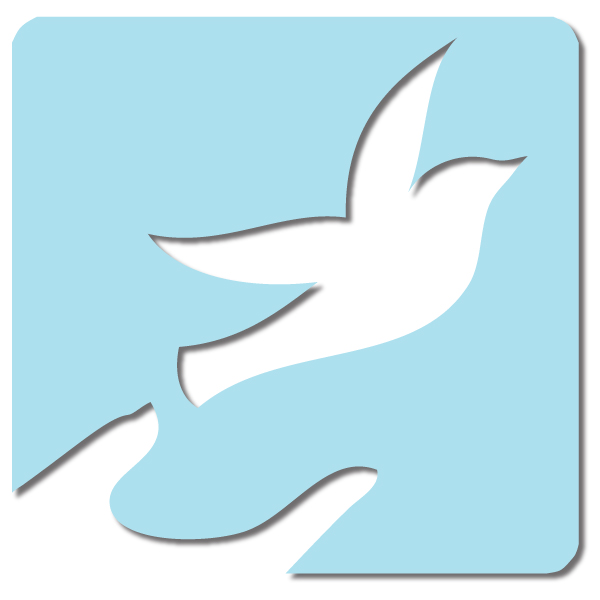
UPDATE 6/8/2020
Joint Statement on Wildlife Rehabiliation during COVID-19 from NWRA and IWRC
The IWRC and our partners have gathered some advice for wildlife rehabilitation operations in the face of the COVID-19 pandemic. The situation is fluid, and our responses must be agile to align. We will work to update this post as additional guidance and tools become available.
Abbreviations used throughout: Member of the Public – MOP, Personal Protective Equipment – PPE
Biosecurity Best Practices
Biosecurity and cleanliness are vital to the prevention of disease transmission. Make sure that you are up to date on recommendations and have protocols in place to safeguard yourself and others.
- Put public health first and follow government guidelines
- Wear personal protective equipment and change it often
- Don’t allow public out of the car, just transfer the animal and get information by phone or other electronic means
- Have arrivals come to the center by appointment only, or at least phone ahead
- Limit volunteers/staff on each shift
- Check expiration dates and ensure proper dilution of disinfectants
- Disinfect surfaces at end of each shift
- Limit use of paper and other fomites (fomites are objects or materials which are likely to carry infection, such as clothes, utensils, and furniture)
Community Considerations
Community can be one of our most powerful resources in trying times. If you are part of a team, reassure staff and volunteers that their safety is top priority. If you are a home rehabber, or part of a network, communicate via phone or video calls and check in on one another. Let your donors and community know what they can do to help you. If you cannot receive patients take this time to work on development, education projects, or your own well being.
- Have clear guidelines in place for volunteers and employees. If many of your volunteers are in a high risk category your guidelines may include letting volunteers self-select not to come in because: 1) they are at higher risk 2) they are caring for someone that is sick or of higher risk. Examples of other “adaptive” policies:
- When volunteers are in the facility only one person can be in a particular area for that day/shift etc and then the area is wiped down.
- Volunteers are in teams that do not shift. If Anna and Sally are on a team today—they should be together tomorrow too. Anna should not be with Charles the next day. If someone from the team falls ill, then you replace the entire team.
- Reach out to other rehabilitators!
- Share resources if you possible
- If veterinary clinics or other organizations direct people to you for drop off, make sure they are aware of new protocols and can communicate those to MOPs
- Update your community and donors
Capacity Considerations
Rehabilitators are all too keenly aware that resources are limited. During times of crisis taking space to evaluate and formulate a plan is crucial to continued successful operation. While it may be stressful to consider worst case scenarios, a plan helps mitigate the stress associated with disasters.
- Do your best to ensure sufficient resources are on hand (people, food, bedding, cleaning, medical supplies). Don’t hoard beyond what you will use.
- Create alternative plans if critical resources are scarce or missing (eg access to ¼ people, low on food for squirrels, out of euthanasia solution/access to vet)
- Triaging cases
- Transferring cases
- Limiting intakes
- Consider how many animals can you care for with your current staff/volunteers and resources? What is your plan if intakes increase?
- Consider what should happen if you become ill? Who is the emergency contact? If you are a single rehabilitator – who will care for the animals?
Intake Procedures
Does the animal actually need to come in? Our pre-intake assessments are more important than ever to avoid patient overload and unnecessary contact.
- Normal procedure: Assess the health of the animal during triage exam. Have the member of public wait in a different room; if the animal doesn’t need intake, have them return the animal back to its original location.
- Adapted procedure: Use cell phone video to assess the animal’s need for intake before the member of public transports the animal.
Intake Information
- Normal procedure: The member of the public writes information on paper form.
- Adapted procedure: When the member of public reaches your location have them call or text. They should not leave their car. Text or email them a link to a Google Form version of your intake or obtain that information via phone and transcribe it.
Transfer of animal
- Normal procedure: Varies
- Adapted procedure: (Animal Help Now has additional suggestions!) Members of the public should not leave their car, or if walking, the sidewalk. When they reach your location have them call or text. While wearing appropriate PPE, you pick up the animal transport container (cardboard box best) and bring it into your facility. Thank the person by phone or text.
Restrictions on movement
Know your terminology. Shelter in place, self-quarantine, lock-down, essential services – these terms have different interpretations in different jurisdictions. Know what they mean for your jurisdiction. Can you travel between home and work? If not, are you prepared to transfer all animals or have people stay on site?
IWRC extends our thanks to the centers that have shared their practices:
Native Songbird Care
RSPCA
St. Melangell’s Small Mammal Sanctuary
Keep an eye out for more information – here on our blog and on our social media accounts regarding this unprecedented, developing situation. We will continue to communicate with our partners to bring you the most accurate and useful information regarding COVID-19 and its impacts on the wildlife rehabilitation community.
Stay safe!
How are you doing? Let us know by answering this survey



Leave a Reply
You must be logged in to post a comment.